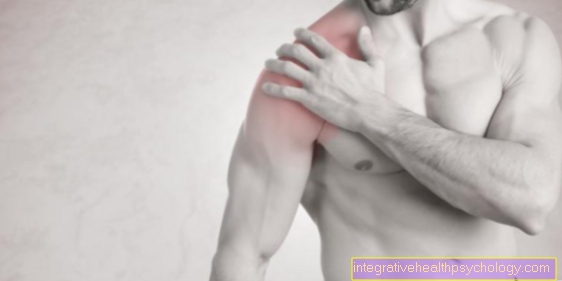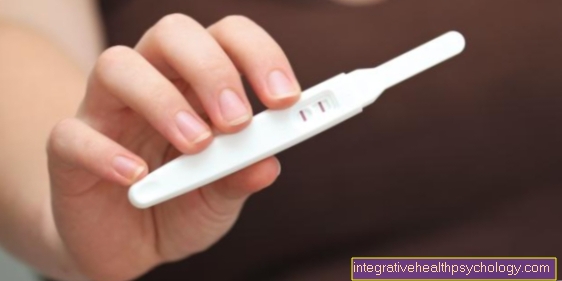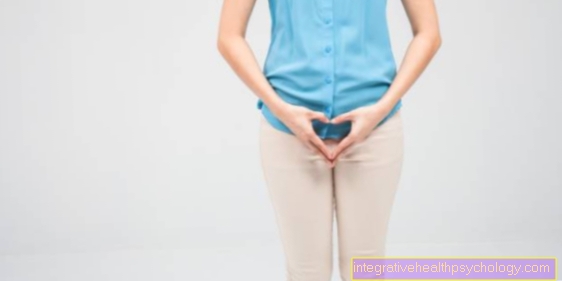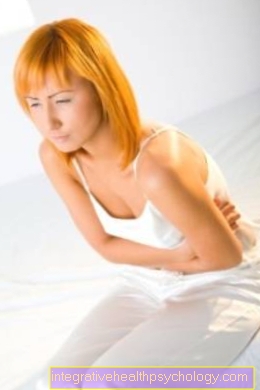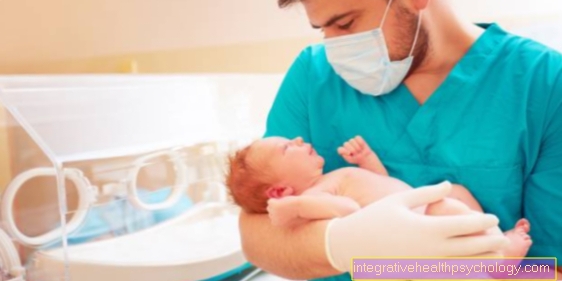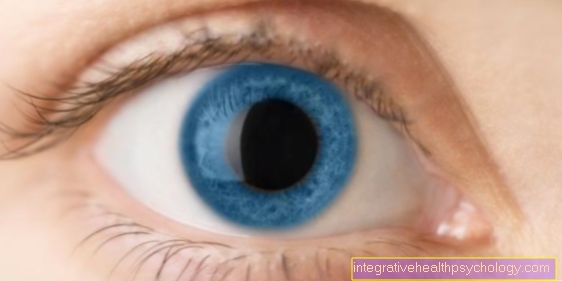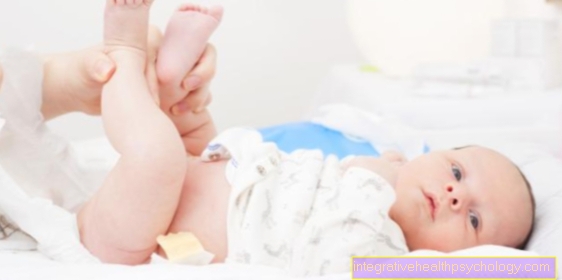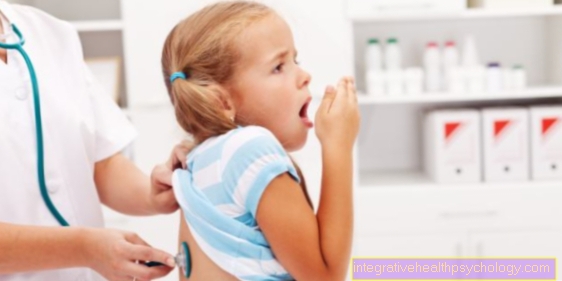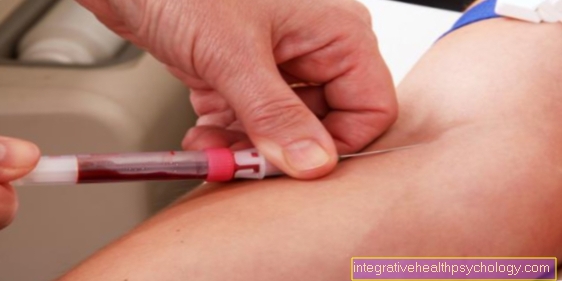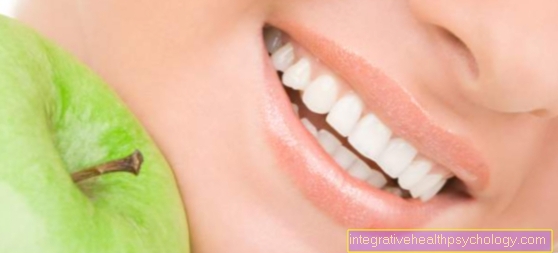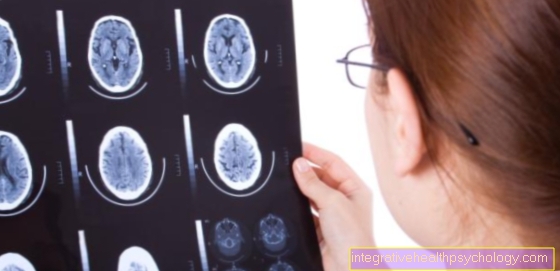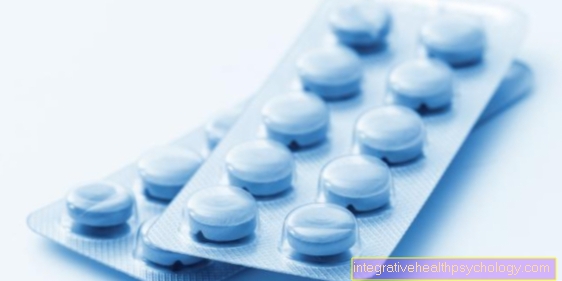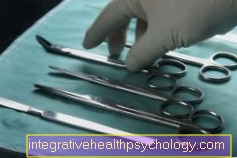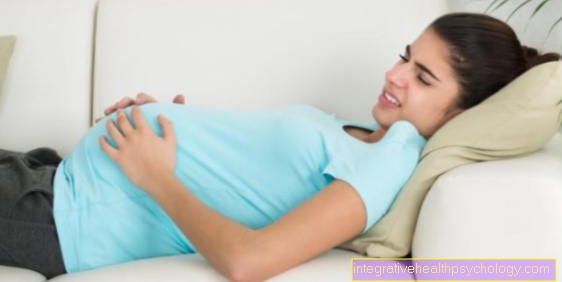Eyebrows fall out
definition
The eyebrows are an area covered with hair above the eyes. An eyebrow loss is understood to mean that an above-average amount of hair is lost on the eyebrows. This leads to severe thinning of the eyebrows. In some cases this can lead to a complete failure. Loss of eyebrows can be genetic. But it can also occur in various life situations and various diseases. The frequency of eyebrow loss is controversial. It therefore remains unclear whether eyebrow loss occurs rarely or frequently.
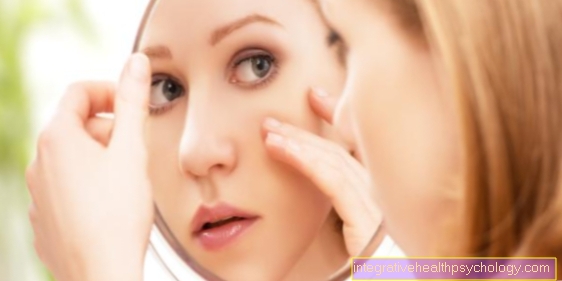
Causes of falling eyebrows
Eyebrow loss can have a variety of causes. Most of the causes are usually hereditary or hormonal.
- hormonal changes, e.g. during pregnancy or menopause
- Thyroid dysfunction
- Metabolic diseases such as diabetes mellitus
- Skin diseases and allergies
- Fungal infections
- Poisoning
- Vitamin and nutrient deficiencies
- Stress or psychological tension, in exceptional cases also the compulsive pulling out of the eyebrow hair (Trichotillomania)
- unwanted side effects from medication or chemotherapy
- Contact allergies to certain cosmetics, shampoo, creams or glasses
The thyroid gland as the cause of falling eyebrows
According to some authors, around half of all women with thyroid disease experience hair loss, including eyebrow hair loss. Both an underactive thyroid and an overactive thyroid can trigger this failure.
With an overactive thyroid, hair growth is accelerated by the increased thyroid hormones. Because of this faster growth, they also fall out faster.
In the case of hypothyroidism, the growth of the eyebrow hair is impaired by a lack of thyroid hormones. Consequently, this can also lead to hair loss. Drug treatment of the thyroid disorder can also cause eyebrow hair loss in some cases. But usually the previous disorder lets the hair of the eyebrows fall out for a while. It takes a certain time before the metabolism is regulated again.
Read more on the subject at: Hair loss caused by the thyroid gland
Hashimoto's thyroiditis as the cause of failed eyebrows
Since the so-called Hashimoto's thyroiditis is an inflammation of the thyroid that affects the body's own immune system, permanent inflammation of the thyroid occurs. As part of this, the eyebrows can also fall out. It is characteristic that there is initially an overactive thyroid and finally an underactive thyroid and thus a deficiency of thyroid hormones. Since the thyroid hormones also control hair growth, it can affect the eyebrows. If Hasimoto's thyroiditis is suspected, a medical evaluation is highly recommended.
Falling eyebrows during menopause
During the menopause, the so-called menopause, there are changes in hormone concentrations. The level of the hormone estrogen decreases. Since this also plays a certain role in hair growth, it is assumed that a falling estrogen concentration can cause eyebrow loss. The concentration of so-called progesterone also drops during menopause, which can also promote eyebrow hair loss. Since the hormone level is permanently changed, a well-considered hormone therapy may be advisable if necessary. This treatment can take place with certain hormone preparations or with the help of hormone implants or so-called phytohormones, i.e. herbal hormone preparations.
Diagnosis of failed eyebrows
Those affected can usually observe for themselves when the eyebrow hairs fall out and become thinner. The doctor will first ask the person concerned specifically. He looks at the eyebrows, the surrounding skin, as well as the hair on the head and the nails. Often the eyebrow loss pattern already shows possible causes. In addition, a plucking test, i.e. testing whether the eyebrow hairs can be easily plucked out with your fingers, can provide clues to a possible diagnosis and prognosis. The doctor can also perform a blood and hair analysis and, if necessary, a scalp biopsy. A blood test can provide information about the content of various vitamins and nutrients, as well as the presence of certain so-called autoimmune antibodies and general inflammation values. Thus, metabolic diseases or functional disorders of the thyroid can be excluded. The hair analysis can be done microscopically. In a scalp biopsy, a tissue sample is taken from the scalp under local anesthesia.
Possible accompanying symptoms
In addition to eyebrow hair loss, you can also other body hair falls out at the same time. The eyelashes fall out, one speaks in the technical language of a so-called Madarosis. Depending on the underlying cause, there may be other side effects. The skin can be warmer / colder, drier / wetter than usual. Excessive sweating can occur. Besides, it can too Redness and itching come. Further you can Dandruff develop on and under the eyebrow hair and / and the skin itself can become flaky. If the eyebrow dropout persists, it can also lead to a lack of self-esteem or even depression.
Dropping eyebrows with scales
Due to hormonal and / or hereditary reasons, as well as due to intolerance, for example from cosmetics or hair shampoos, dandruff can also develop below the eyebrow hair. Dry skin often affects the dandruff formation, which occurs in connection with eyebrow loss or promotes it. For example, certain medications can also have a dehydrating effect and cause dry skin as an undesirable side effect.
Duration of the falling eyebrows
Depending on the cause, the duration of the eyebrow loss can be very different. Eyebrow hair loss caused by stress or intolerance and allergies is usually limited in time. Provided that those affected eliminate or avoid the causes. Furthermore, for example, eyebrow hair loss in babies can occur 8 weeks after birth and last for about 6 months. Loss of eyebrows can also occur during breastfeeding, which usually ends when weaning. The duration is therefore limited in these cases.
It is different in the menopause, when the hormone level is permanently changed and without treatment this can permanently lead to eyebrow hair loss. The duration of the child's circular hair loss can resolve spontaneously within 6 months. However, the symptoms can recur several times, permanently in bursts. If there is a thyroid disorder, it can lead to permanent eyebrow loss if left untreated. With adequate treatment, the hair loss of the eyebrows lasts until a balanced metabolism has been achieved.
What can you do about falling eyebrows?
Not every eyebrow loss needs medical treatment. Losing a few eyebrow hairs is basically not a problem and to a certain extent normal. However, if the eyebrow loss persists for a long time, side effects occur and there may even be bald spots on the eyebrows, this should be observed.
For example, your own diet should be questioned and adjusted if necessary. A balanced diet with sufficient vitamins and minerals can fix eyebrow loss caused by deficiency symptoms.
Cosmetics and shampoos that are sensitive to eyebrows should be identified and avoided. With very dry skin, a little sesame or almond oil can in some cases support the skin and thus the growth of the eyebrows. The treatment of eyebrow loss depends on the cause. If it is not possible to find and eliminate the cause yourself, a doctor's visit is advisable. Depending on the cause, certain measures and medication, possibly a homeopathic treatment, can be supportive and helpful. If the cause is unknown, it is not advisable to buy expensive products that promise relief but may do more harm than cure.
Beautiful, thick eyebrows are a dream of every woman. The following article shows you how to accelerate the growth of your eyebrows: Growth of eyebrows
Homeopathy for falling eyebrows
In the case of eyebrow loss, some sufferers feel that homeopathic treatment is supportive. Treatment should be guided by a professional. It does not replace conventional medical treatment. Different substances can be used depending on the symptoms.
If poisoning has caused eyebrow loss, thallium can be used.
If skin changes in the sense of weeping and red areas of the skin as well as itchy pain occur accompanying the eyebrow loss, Sulfur is recommended.
In emaciated women with eyebrow loss, the intake of Alumina may have a supportive effect.
In the case of eyebrow hair loss combined with dandruff and itching, sodium chloratum may be advisable in some cases.
If there is a burning pain instead of itching, Arsenicum album is recommended.
The selection of homeopathic remedies should not only be based on the physical complaints, but also, for example, factors that aggravate or improve the complaints. As a rule, the above substances are used in potencies from D6 to D12. Usually 5 globules 3 times a day or 5-20 drops 3 times a day or one tablet per day are recommended
Read more on the subject at: Homeopathy for hair loss
Loss of eyebrows in men
The special hair loss in men, which can also affect the eyebrow hair, is according to the latest research not due to the hormone testosterone. The University Medical Center Greifswald reported in mid-April 2017 on studies that prove this. In 373 male participants, no connection was found between the so-called sex hormones testosterone or androstenedione and hair loss. The The cause of hair loss in men is still unclear. Relationships to a by-product of testosterone, the hormone dihydrotesterone, are discussed. In addition, the dysregulation of the so-called tissue hormone prostaglandin D2 could trigger eyebrow hair loss in men. But this is still controversially discussed and intensively researched.
Loss of eyebrows in women
In addition to the common causes of eyebrow loss, you can hormonal changes in the female body favor the failure and affect the course of treatment. This can be caused by certain situations, like the Menstrual phase, during pregnancy or in menopause be evoked. But that too Stopping the birth control pill, can greatly change the hormonal conditions and cause short-term eyebrow loss. The hormone estrogen affects hair growth in the female body. Sudden changes and fluctuations in estrogen levels in a woman can lead to acute eyebrow loss.
Eyebrow Loss During Pregnancy
Eyebrow hair loss is usually rare during pregnancy itself. The so-called steroid hormone progesterone promotes hair growth in both quantity and quality. Shortly before menstruation and during pregnancy, this hormone can be found in increased concentrations in the female body. The estrogen concentration also increases, which also contributes to improved hair growth. A drop in these two hormones after delivery can cause eyebrow hair loss. This is also known as postpartum effluvium.
Read more on the subject at: Hair loss during pregnancy
Loss of eyebrows in the child
As part of the child's "circular hair loss“, The so-called Alopecia areata eyebrow hair loss can occur. As a side effect can a decreased nail growth and Swelling of the lymph nodes occur. One often observes one simultaneous occurrence of neurodermatitis, hay fever, allergic bronchial asthma or autoimmune diseases of the thyroid gland. The exact causes of circular hair loss in children are not yet known and are still being researched. The diagnosis must be confirmed before drug therapy is recommended. The treatment is very individual and requires the attention and support of parents and the social environment.



